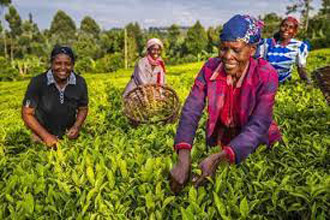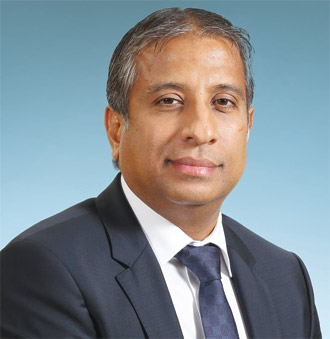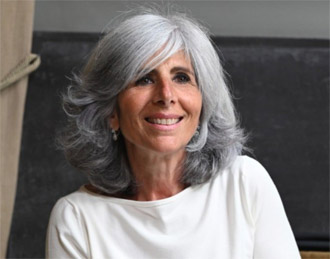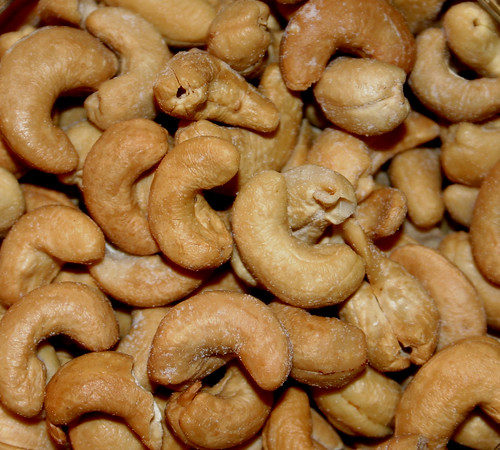
Wednesday, 11 September 2024
India’s pharma exports continue to grow at brisk pace

Friday, 21 June 2024
Browns becomes world’s biggest tea exporter in deal with LIPTON
- LIPTON Teas and Infusions and Browns Investments agree long-term partnership to accelerate tea industry transformation
- Lankan firm to get control of Lipton tea estates in Kenya, Rwanda, and Tanzania; deal second overseas acquisition after purchase of James Finlay Kenya last year
- Strategic relationship with Lipton to champion global adoption of new quality, social and environmental standards
- LIPTON Teas and Infusions CEO Nathalie Roos says Browns the preferred partner with credibility, capabilities and scale, to work with to raise standards in the whole tea industry
- Communities to be offered 15% stake at discounted price with annual dividend
- Endowment of 1 b Kenyan shillings into new Community Welfare Trust



Tuesday, 5 March 2024
WTO conference ends in division and stalemate – does the global trade body have a viable future?

The 13th World Trade Organization (WTO) ministerial conference in Abu Dhabi has failed to resolve any issues of significance, raising the inescapable question of whether the global trade body has a future.
The three-day meeting was due to end on February 29. But late into a fourth extra day, the 164 members were struggling to even agree on a declaration, let alone the big issues of agriculture, fisheries and border taxes on electronic commerce.
The closing ceremony was sombre, and the ministerial declaration bland, stripped of the substantive content previously proposed. Outstanding issues were kicked back to the WTO base in Geneva for further discussions, or for the next ministerial conference in 2026.
Briefing journalists in the closing hours, an EU spokesperson noted how hard it would be to pick up the pieces in Geneva after they failed to create momentum at the ministerial conference. She predicted:
[Trade] will be more and more characterised by power relations than the rule of law, and that will be a problem notably for smaller countries and for developing countries.
Restricted access
That imbalance is already evident, with power politics characterising the conference from the start.
There were accusations of unprecedented restrictions on non-governmental organisations (NGOs) registered to participate in the conference. These bodies are crucial to bringing the WTO’s impacts on farmers, fishers, workers and other communities into the negotiation arena.
A number of NGOs have submitted formal complaints over their treatment by conference host the United Arab Emirates. They say they were isolated from delegations, banned from distributing papers, and people were arbitrarily detained for handing out press releases.
Critical negotiations were conducted through controversial “green rooms”. These were where the handpicked “double quad” members – the US, UK, European Union, Canada, China, India, South Africa and Brazil – tried to broker outcomes to present to the rest for “transparency”.
Influence of power politics
These powerful countries largely determined the outcomes (or lack of them). The US, historically the agenda-setter at WTO ministerial conferences, appeared largely disinterested in the proceedings, with trade representative Katherine Tai leaving early.
The final declaration says nothing about restoring a two-tier dispute body, which has been paralysed since 2019 by the refusal of successive US Republican and Democratic administrations to appoint new judges to the WTO’s appellate body.
The EU failed to secure progress on improvements to the appeal process. Likely Republican presidential nominee Donald Trump has already announced he would impose massive WTO-illegal tariffs on China if elected.
China, Japan, the US and EU – all big subsidisers of distant water fishing fleets – blocked an outcome aiming to protect global fish stocks, an issue already deferred from the last ministerial meeting.
The six Pacific Island WTO members lobbied tirelessly for a freeze and eventual reduction in subsidies. But the text was diluted to the point that no deal was better than a bad deal.
The EU, UK, Switzerland and other pharmaceutical producers had already blocked consensus on lifting patents for COVID-19 therapeutics and diagnostics, sought by 65 developing countries. A deal brokered in 2021 on COVID vaccines is so complex no country has used it.
Domestic and global agendas
India’s equally uncompromising positions also reflected domestic priorities. The 2013 Bali ministerial conference promised developing countries a permanent solution to prevent legal challenges to India’s subsidised stockpiling of food for anti-hunger programmes.
A permanent solution was a red line for India, which faces an election next month and mass protests from farmers concerned at losing subsidies.
Agricultural exporters, including New Zealand, tabled counter-demands to broaden the agriculture negotiations. The public stockpiling issue remains a stalemate, without any real prospect of a breakthrough.
India and South Africa formally objected to the adoption of an unmandated plurilateral agreement on investment facilitation.
The concerns were less with the agreement itself and more with the precedent it would create for sub-groups of members to bypass the WTO’s rule book. This would allow powerful states to advance their favoured issues while developing country priorities languish.
Crisis and transformation
The face-saver for the conference was the temporary extension of a highly contested moratorium on the right to levy customs duties at the border on transmissions of digitised content.
Securing that extension (or preferably a permanent ban on e-commerce customs duties) on behalf of Big Tech was the main US goal for the conference. Developing countries opposed its renewal, so they could impose tariffs both for revenue and to support their own digital industrialisation.
The moratorium will now expire in March 2026, so the battle will resume at the next ministerial conference scheduled to be held in Cameroon that year.
But there is every likelihood the current paralysis at the WTO will continue, and the power politics will intensify. As the previously quoted EU spokesperson also mused:
Perhaps the WTO needed a good crisis, and perhaps this will lead to a realisation that we cannot continue like this.
Ideally, that would result in a fundamentally different international institution – one that provides real solutions to the 21st century challenges on which the WTO is unable to deliver.![]()
Jane Kelsey, Emeritus Professor of Law, University of Auckland, Waipapa Taumata Rau
This article is republished from The Conversation under a Creative Commons license. Read the original article.
Thursday, 29 February 2024
India slowly taking export market share from China, study shows
 Smartphone with Chinese applications is seen in front of a displayed Indian flag and a “Banned app” sign in this illustration picture taken July 2, 2020. REUTERS/Dado Ruvic/Illustration/File Photo
Smartphone with Chinese applications is seen in front of a displayed Indian flag and a “Banned app” sign in this illustration picture taken July 2, 2020. REUTERS/Dado Ruvic/Illustration/File Photo- 28 February 2024, (Bloomberg) — India is chipping away at China’s dominance in electronics exports in some key markets as manufacturers diversify supply chains away from the world’s factory to other parts of Asia, a new study shows.
- The impact is most pronounced in the UK and US, where geopolitical tensions with China have increased in recent years.
- India’s electronics exports to the US as a ratio of China’s increased to 7.65% in November last year from 2.51% in November 2021, according to London-based Fathom Financial Consulting. In the UK, the share rose to 10% from 4.79%.
- India’s government is luring electronics manufacturers to the country with heavy incentives, such as tax cuts, rebates, easier land acquisition and capital support. The aim is to expand the domestic manufacturing industry in order to export more, and help businesses grow to global scale through partnerships.
- India houses Samsung Electronics Co.’s biggest mobile phone factory, while Apple Inc. makes at least 7% of all its iPhones in India through its contract manufacturer Foxconn Technology Group and Pegatron Corp.
- The rise in electronic exports is “likely the result of Foxconn’s increasing investment in India,” Andrew Harris, an economist at Fathom Financial Consulting, wrote in a note last week.
- India’s progress in gaining market share has been more limited in Europe and Japan, “suggesting a move towards dual supply chains (China plus one) rather than a complete abandonment of China-based production, at least for now,” Harris said. The report shows that India’s electronics exports as a ratio of China’s was 3.38% in Germany and 3.52% globally.
- Indian companies have been touting their role in multinationals’ ‘China plus one’ strategy, which sees manufacturers developing back-up capacity in other countries.India’s rising market share is a boost for Prime Minister Narendra Modi, who has touted his ‘Make in India’ plan as a way of creating jobs, expanding exports and making the economy more self reliant by reducing the need for imports. He’s widely expected to win a third term in office in elections due within a few months. India slowly taking export market share from China, study shows
Sunday, 20 August 2023
M&M aims to double exports in 3 years with new OJA platform
.jpg)
- By Aniket Gupta: Mahindra & Mahindra (M&M), the leader among India’s tractor industry companies, has set its sights on a remarkable goal. It aims to double its exports from India within the next three years.
- This ambitious plan will gain momentum from the introduction of its innovative platform, OJA, which was recently unveiled in Cape Town, South Africa.
- Mahindra Tractors is a part of the group’s farm equipment division of the $19.4-billion Mahindra Group, and the flagship unit of the division.
- During the year ended 31 March 2023, the Mahindra Group exported 18,104 tractors. Hemant Sikka, president of the farm equipment segment, aims for a substantial leap, aspiring to raise this figure to 36,000 tractors by fiscal 2025-26.
- With the introduction of the OJA lineup, M&M is embarking on an expansion into a dozen new markets. This initiative includes the establishment of a new office in Thailand, which will serve as a strategic base for accessing the ASEAN markets.
- The company's sights are set on European markets as well, with special focus on countries renowned for vine cultivation, such as Germany, Italy, and Spain. Sikka emphasized that M&M currently lacks a footprint in both regions, ASEAN and Europe.
- What about the American market? Growth there has been slow, but Sikka anticipates this is a temporary situation.
- In Brazil, M&M has already achieved a remarkable feat by increasing its market share from 3.5 per cent to an impressive 7.2 per cent in the past two years.
- Distinct sub-platforms
- Comprising four distinct sub-platforms — sub-compact, compact, small utility, and large utility — the OJA platform is a comprehensive family. At present, the sub-compact tractor range is earmarked exclusively for international markets and will not be offered in India. Special attention will be paid to the American market, according to Sikka.
- However, Sikka has noted that if there is a demand for the sub-compact category within India, its introduction in India too would be considered.
- Beginning in January 2024, M&M is set to initiate the export of the sub-compact series within the OJA tractor range. On the other hand, the introduction of the expansive utility platform is reserved for a later timeframe, anticipated around the fiscal year 2025-26. This forthcoming platform is created to serve both the domestic Indian market and international export markets.
- What about pricing? The Mahindra OJA 27 HP tractor will be priced at Rs 5.64 lakh, and the OJA 40 HP tractor at Rs 7.35 lakh.
- Production of the OJA range will happen at M&M's Zaheerabad facility in Telangana, which has a total annual manufacturing capacity of 100,000 tractors.
- Sikka notes that the tractor industry has maintained a consistent compound annual growth rate (CAGR) of approximately 7 percent over several years. In contrast, in the horticulture segment, tractors are experiencing a faster, double-digit growth rate.
- The OJA series is a dedicated range of tractors tailored for specific uses, finding utility in both horticulture and paddy cultivation. Sikka explains that paddy farming need to be lighter as the presence of water makes heavier tractors vulnerable to sinking in the fields.In an unveiling event on Tuesday, 15 August 2023, M&M introduced three distinct OJA offerings spanning a weight range of 700 kg to 2000 kg and containing power capacities ranging from 20 horsepower to 40 horsepower. Source: https://www.domain-b.com/
Thursday, 18 February 2021
India approves 156 defence equipment for export

- India on Thursday approved the export of 156 defence equipment, including Astra missiles and Tejas indigenous Light Combat Aircraft, artillery guns, explosive, tanks and missiles, anti-tank mines and others, worth an estimated Rs35,000 crore, as the government is looking at enhancing defence exports to friendly countries.
- The export list also includes 19 aeronautical systems, 16 nuclear-biological-chemical equipment, 41 armament and combat systems, 28 naval systems, 27 electronic and communication systems, 10 life protection items, four missile systems, four micro-electronic devices and seven other material.
- Defence Research Development Organisation (DRD0) released the extended list, which now includes even Beyond Visual Range (BVR) air-to-air missile Astra, anti-tank guided missile Nag and Brahmos weapon system.
- Earlier, it was the Akash missile that was given clearance for export.
- Akash is a surface-to-air missile system that provides short-range air defence and can operate in autonomous or group modes of operation with a range of three to 25 km.
- The Astra missile is a beyond-visual air-to-air system integrated with Indian Air Force's Su30 MKI. In times to come, other Indian fighter jets will also be integrated with the Astra.
- Brahmos is a supersonic missile intended for use by the Army, Navy and Air Force. This universal missile can be launched from ships, mobile launchers, submarines and aircraft.
- The government is now looking at enhancing its defence exports, aiming to record export of defence equipment worth Rs35,000 crore ($5 billion) by 2025, as per the Defence Production Export Promotion Policy 2020.
- The new policy aims at enhancing exports and building a domestic defence industry for self-reliance, and targets a turnover of Rs1,75,000 crore ($25 billion dollars) by 2025.
- The policy also looks at doubling the domestic procurement from the Indian industry. Source: https://www.domain-b.com/
Wednesday, 22 April 2015
K-Beauty Goes Global
Backed by the strong Korean Wave fever, Korea’s cosmetics brands are actively expanding their presence in overseas markets. Korea’s cosmetics outlets expand from Chinese countries toward North America, Europe, the Middle East, and Central Asia. In addition to major brands such as AmorePacific and LG Life Sciences, mid-sized local brands, including Missha and TonyMoly, are riding high on the K-Beauty fever. After years of suffering deficits, the nation’s cosmetics trade turned profitable last year, first in history. Korea’s cosmetics exports amounted to US$1.92 billion last year, up more than 50 percent from a year ago, exceeding the amount of imports ($1.69 billion). The upturn in Korea’s cosmetics trade was driven not only by major brands but by smaller brands, including Able C&C’s Missha. Missha launched its cosmetics product lines, including the First Treatment Essence, into 29 countries. In recent days, Missha is expanding its presence in East Europe where it achieved sales of $4.55 million last year, up 38.5 percent from a year ago. Source: The Korea Economic Daily. Source: Article
Sunday, 19 April 2015
Canadians to supply India with uranium
Synthetic Fibres: a New Trend in China
Friday, 30 May 2014
The changing face of global banana trade
Wednesday, 30 April 2014
Oner: EBOs, the next big foot forward
Monday, 31 March 2014
India: Branding revives cashew industry
Thursday, 23 January 2014
Jain Irrigation bags the EEPC India 2012-13 “Star Performer” Award

Jain Irrigation bags the EEPC India 2012-13 “Star Performer” Award for outstanding export performance Jain Irrigation Systems Limited received The “Star Performer” award for 2012-13 at the 45th EEPC India Award Function held on 22nd January 2014 at Bombay Exhibition Center. The Company was awarded for their outstanding performance in the product group of ‘Other Agricultural and Forestry Machinery’. The Awards were presented by Dr. E M S Natchiappan, Hon’ble Minister of State for Commerce & Industry, Govt. of India at a function held in Mumbai yesterday. The EEPC Awards are given in recognition of outstanding export performance. Source: Article
Sunday, 2 June 2013
United Aircraft says Russian/Indian transport to fly in 2017
Saturday, 23 March 2013
Rise in Ecuadorian mangos to US
Friday, 8 March 2013
Antonio Vurchio joins Dottor Storelli in Berlin
Thursday, 21 February 2013
Torresol Energy wins the CSP Today Seville award
Tuesday, 29 January 2013
GreenSky London bio-fuel plant preparing for lift-off
Tuesday, 25 December 2012
Russia, India sign package of agreements
The two countries have specifically signed a memorandum of understanding between the Russian Direct Investment Fund and the State Bank of India. The two will invest in joint projects one billion dollars each. The Russian and Indian Ministries of Culture have signed a cultural exchange programme for 2013 through 2015, while the Ministry of Education and Science of the Russian Federation and the Ministry of Science and Technology of India have signed a memorandum of cooperation in the field of science, technology and innovations. An agreement was also concluded on the sidelines of the summit on setting up a joint venture by the Helicopters of Russia Company and India’s Elcom Systems Private Ltd. Moscow, Delhi in Syria dialogue call, President Vladimir Putin and Russia and India call on world powers to comply with the Syria resolutions of the UN Security Council and the decisions of the Geneva conference on Syria. They believe there is no way out of the Syrian crisis other than a national political dialogue. Prime Minister Manmohan Singh said this in a joint statement issued after their talks in New Delhi on Monday. According to the United Nations, the Syrian conflict has claimed 20,000 to 30,000 lives since first erupting 21 months ago. The Syrian government says foreign-backed terrorists are at work. Russia, India to foster military ties: “We have agreed to step up Indian-Russia and India have made a commitment to foster bilateral military and technical cooperation, Russian President Putin has said in the wake of his Monday meeting with PM Manmohan Singh. Russian cooperation in military and technical spheres, to work on new projects through joint ventures and know-hows exchange,” Mr. Putin said. He cited the fresh deal between a Russian state-run chopper maker and India on exports of helicopter units and equipment. India has agreed to purchase 71 MiG-17B-5 helicopters worth 1.3 billion dollars. Russia is also to deliver to India 1.6-billion-dollar plane units to organize the licensed assembly of Su-30MKI jet fighters. Putin stakes on India visit as relations catalyst: Russian President Vladimir Putin hopes his visit to India will serve to promote bilateral relations in all areas. He told the Indian Prime Minister Manmohan Singh during their talks in New Delhi earlier today that he is certain that both nations will stand to benefit by today’s summit-level meetings, according to the Voice of Russia correspondent. Putin pointed out that Russia and India have decided to reach a 10 billion-dollar trade turnover in the next few years. We take a special pride in the fact that this also applies to military-technological cooperation, where trading is in large amounts, but
what’s even more important is the fiduciary nature of cooperation, he said. Manmohan Singh confirmed for his part that India pays great attention to relations with Russia. “I’m sure today’s meetings will benefit the both nations and speed up our bilateral relations,” the Russian leader told India’s PM Manmohan Singh Monday. Mr. Putin reminded the Indian prime minister of their common goal of pushing bilateral goods turnover up to 10 billion dollars amid a more balanced trade relationship between the two countries. “We are particularly proud of our military and technical cooperation and ensuing high turnover in this sphere. But it’s that atmosphere of trust, and not just trade volumes, that really count,” Mr. Putin stressed. “It’s clear that our relations are gaining momentum in all spheres of cooperation,” he added. India’s PM Manmohan Singh said he believed this momentum will surge and called the tradition of official visits a key catalyst in the Russia-India relationship. “India is paying a lot of attention to its ties with Russia,” he confessed, praising Mr. Putin for his contribution into this cause. Russian atomic official pledges safety of India’s Kudankulam NPP : The chief of Russia’s atomic energy giant Rosatom, Sergei Kiriyenko, has assured journalists that the corporation had implement all of the post-Fukushima safety recommendations, when building the Kudankulam Nuclear Power Plant in southern India, Voice of Russia’s Anna Forostenko says. President Putin has called strengthening Russian-Indian ties a “privileged partnership,” Anna Forostenko has cited the Russian leader as saying during his meeting with India’s PM Manmohan. He added that Russia’s equipment exports to India had surged 40% over 2012. According to the Russian president, high-tech goods constituted some 40% of all bilateral turnover. The Russian Direct Investment Fund (RDIF) and the State Bank of India (SBI) today announced they were planning to set up a $2-billion investment consortium. RDIF’s CEO KIrill Dmitriyev vowed to boost bilateral trade between the nations to 20 from 10 billion dollar over the next three years. Putin starts talks with India PM: Russian President Vladimir Putin has started talks with India’s Prime Minister Manmohan Singh. Before the meeting, the two leaders greeted each other in the inner yard of the prime minister’s residence and posed for a brief photo session. Mr. Putin and Mr. Singh are to be joined later by delegations of the both nations. This get-together is the first meeting on Putin’s Indian agenda. On Monday, the Russian president will meet his Indian counterpart, Indian National Congress’s Sonia Gandhi and opposition leader Sushma Swaraj. Putin starts official visit to India: Russian President Vladimir Putin has begun his official visit to India.He is due to hold talks with President Pranab Mukherjee abd Prime Minister Manmohan Singh on cementing bilateral cooperation in New Delhi later today. The parties to the talks will focus on energy, investment, military- technological cooperation, as well as topical international problems. Russia and India are strategic partners: The two countries’ bilateral trade turnover has grown six - fold since the year 2000, and is expected to reach 10 billion dollars this year. A number of agreements are due to be signed in the wake of the New Delhi talks, including those in the field of military-technological and cultural cooperation. India and Russia: new prospects for strategic partnership in the 21st century : I am glad to have an opportunity to An article by the President of the Russian Federation Vladimir Putin published December 24 by India’s leading English-language newspaper The Hindu. address the readers of one of the most influential Indian newspapers – The Hindu. As my visit to New Delhi is beginning, I would like to outline approaches to further development of strategic partnership between India and Russia. This year marked the 65 th anniversary of diplomatic relations between our countries. During the past decades we have acquired a vast experience of joint work and achieved progress in a range of fields. Political epochs were changing but the principles of bilateral ties, such as mutual confidence and equality, remained the same. I would like to stress that deepening of friendship and cooperation with India is among the top priorities of our foreign policy. And now we have every reason to say that they have really unique special and privileged character. The Declaration on Strategic Partnership between India and Russia signed in October 2000 became a truly historic step. The developments in the first decade of the 21 st century confirmed that it was a particularly significant and timely step. In fact, today we, the whole civilization, face serious challenges. These are unbalanced global development, economic and social instability, lack of confidence and security. In that situation India and Russia show an example of responsible leadership and collective actions in the international arena. We have a common goal – to make the world we live in more just, democratic and secure and to facilitate resolving global and regional problems, including the situation in the Middle East and North Africa, and in Afghanistan. I would like to note that our joint work in the BRICS becomes
BRICS is an international political organisation of leading emerging economies, arising out of the inclusion of South Africa into the BRIC: Image Link Wikimedia
increasingly intensive. The authority of that association is growing every year, and that is quite natural. Our proposed initiatives are aimed at establishing new architecture of multipolar world order. The same constructive approach is also reflected in our interaction in the Shanghai Cooperation Organization and other multilateral formats. We expect a meaningful dialogue with Indian side within the framework of Russia’s presidency in the G20 that has begun. Joint steps in the international arena, participation in the development of rules of global trade and enhancing business, scientific and technological and humanitarian ties form the basis for achieving a new quality of partnership. We attach particular significance to bilateral trade and investment relations. The growing economic potential of India and Russia is mutually complementary in many respects. Our trade turnover has overcome the consequences of global crisis, and in 2012 we expect to reach record numbers, over 10 billion USD. Our next goal is to reach 20 billion USD already by 2015. To this end, we should engage all reserves and maintain direct contacts between business communities and promote establishing efficient investment, technological and industry alliances in the most dynamic and promising fields. For instance, in energy industry, primarily nuclear one. The construction of the Kudankulam Nuclear Power Plant with the use of the most reliable and up-to-date technologies and standards became a major breakthrough project in that field. The beginning of operation of the first power unit of that plant will allow to significantly reduce the energy deficiency in southern states of India, and eventually eliminate it completely, after the launch of the second and other power units. We expect that the implementation of our arrangements on the construction of new NPPs in India will begin in the nearest future. We hope for significant returns from long-term projects in steel industry, hydrocarbon production, car and aircraft manufacturing, chemical and pharmaceuticals industries, in the field of information and biotechnologies. Important benchmarks are set in the Integrated Long-Term Program of Cooperation in the sphere of science, technology and innovation until 2020. Its main task is to ensure that our scientists conduct fundamental and applied research in order to create new technologies, equipment and materials. The joint operation of Russian global navigation satellite system GLONASS opens up broad prospects. The package of respective bilateral agreements has already been signed. We intend to promote practical interaction in that important area. The strategic nature of partnership between India and Russia is witnessed by the unprecedented level of our military and technical cooperation. The licensed production and joint development of advanced armaments rather than just purchasing military products becomes a key area of activities. Serious attention is paid to developing a fifth generation multifunctional fighter plane and a multipurpose transport aircraft. The product of our designers, the "BrahMos" cruise missile, has successfully passed all tests. Today experts are thinking on its aircraft version. I am confident that such a multivector cooperation will allow our countries not only to reach leading positions as a range of hi-technology projects are concerned, but will help to successfully advance joint products to markets of third countries. Humanitarian cooperation has a particular significance for India and Russia, which are States with great cultural heritage and potential. The centuries-old history and culture of India, majestic architectural monuments and museums of Delhi, Agra and Mumbai have a unique attractive force. In its turn, Indian citizens with interest discover the wealth of Russian music, literature and art. The Festival of Russian Culture in India and All-Russian Festival of Modern Cinema and Culture of India which were successfully held this year have convincingly proved it once again. I am confident that awareness-raising and educational projects should be more actively promoted and tourism and youth exchanges developed. In fact, they enrich our citizens and add new contents to human dimension of bilateral relations which becomes all the more significant and relevant today. The India-Russia summit in New Delhi was preceded by painstaking and comprehensive preparations. We have a clear vision of major vectors of future-oriented joint work. I am confident that summit talks will be constructive, as they always were, and their outcome will give a powerful impetus to strategic partnership for the benefit of our two countries and peoples, in the interests of peace and stability in Eurasia and on our common planet. I will take the liberty to outline joint prospects for strategic partnership between India and Russia in the 21 st century. These are deepening of cooperation in knowledge-intensive fields based on strong historic traditions, advancement of joint products to international markets, further increasing of the share of high value added products in the trade turnover, enhancing the role and effectiveness of Indian-Russian interaction in international affairs, and the widest possible realization of the potential of cultural and humanitarian contacts. I sincerely wish to the people of friendly India peace, well-being and new impressive achievements. Source: Voice of Russia

